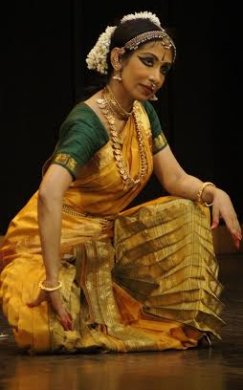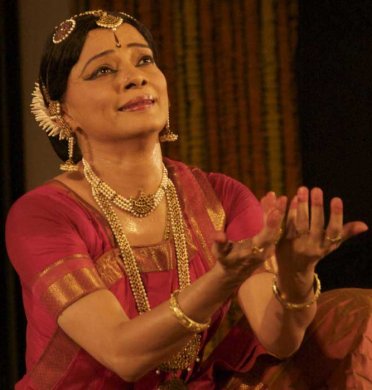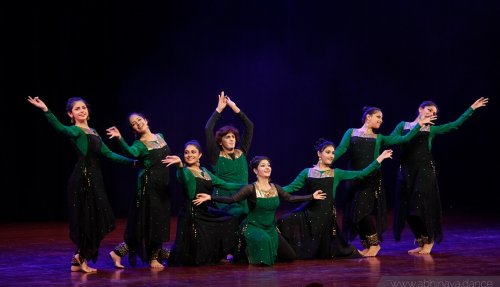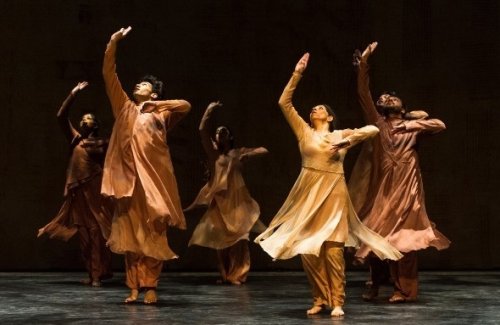
|
 |

|
 |
Patronage, Economics & Solo Indian Dance - Navina Jafa e-mail: navina.jafa@gmail.com August 15, 2019 Replacing the Temples and court, the Indian Nation-State since 1947 emerged as the chief patron of Indian classical dance. With the opening of the economy in the 1980s, cultural economics led to dance spectacles as group productions, development of stitched solo performances on recorded music, the pay to perform malady, virtual learning and most of all, the disarray patronage of the State as chief patron. Cultural economics and patronage have led to marginalizing solo dance. Importance of the Solo Barring Kuchipudi and Manipuri, the basic feature of the Indian classical tradition is the solo dance. Taking an overarching view, one standing feature of the dances is the character of improvisation in performance. In most traditions, improvisation called manodharma is present largely in the abhinaya (mimetic) repertoire; however, in Kathak, it is called upaj (to grow) and applies to both rhythmic patterns and mimetic elaborations. The improvisation illustrates creative competence of a dancer. Greater the manodharma / upaj, the more outstanding the artist. Ensuring the intrinsic character of every tradition, improvisations need to maintain the structural grammatical rules defining each dance tradition. Unlike the West where the dance and the music are written heritage, the Indian is oral and is a flowing tradition (parampara). Every nuance imbibed/interpreted by individuals is different and the signature of an artist is to contribute to the flow of the tradition making it relevant for the contemporary time and audience. The marginalization of the Solo Along with changes in the economy, India asserted its global space through its soft power in the form of a series of the Festivals of India in 1980s. Keshav Kothari, former secretary of the Sangeet Natak Akademi (SNA) said, "While a few solo stars such as Alarmel Valli and Malavika Sarukkai were established in the course of the Festivals of India, the prominent feature of the festivals was the group choreography; polished, professional and global, it compared with the likes of the Swan Lake presented at the Bolshoi."[i] Thus arose avant-garde choreographers like Kumudini Lakhia (Kathak) and Chandralekha (Bharatanatyam). They brought professionalism, and abstract processes that were accompanied by design, and minimalism. Such group choreographies appealed to the contemporary and the global market. Inevitably the dance group spectacle captured the emerging market. The training by a large number of gurus focused on cloning, not nurturing solo dancers.  Alarmel Valli  Malavika Sarukkai Additionally, more recently another aspect for soloists is the malady of 'pay to perform' economically benefitting a nexus of organizers and senior dancers. Thinker, diplomat P.N. Haksar of the 'Haksar Committee Report' articulated that "The festival model will result in mushrooming of impresarios and events with little understanding of the dance. The spectacle, showcasing, and money will dictate the patronage patterns impacting the core of these traditions. India requires cultural administrators who are both subject experts and educated in cultural management specific to the post-colonial contexts."[ii] The prophetic observation by Haksar is evident in the number of event management companies who now are central to the showcased dance displays. The spectacle of the Group in the Market Group dance productions as spectacles are packaged and defined by design of sound-light, multimedia, costumes and most often by recorded music. Creating a hype through on and offline publicity serves to sell the product. The successful spectacle has lured the State to commission group performances over solo in a variety of the festivals. For instance, the Ministry of Culture impanels artists as solo but demands groups for its series of Festivals of India. Not surprising, gurus too invest in the group 'product', rather than nurturing soloists. The group synergy locates the guru in most cases a performer in the avatar of a choreographer and safeguards the central position of the Guru. However, group dance does have some advantage on the level of learning stage. It allows the young student the experience of a stage and the motivational visibility to a large number of students under a guru. Solo dance product by Dance companies: The policy of creating repertories within the State-run institutions like the Kathak Kendra and Kalakshetra contributed to patronizing the group over solo dance. Parallel with the repertory in State institutions came the concept of the private 'Dance Company'. Of the several listed companies, just a few seem to function as 'commercial' and professional Dance Organizations. Most 'companies' are registered societies engaged in the teaching of dance; their event listing comprise of self-produced or commissioned performances and random events. Of the several, the Abhinava Dance Company by Nirupama and Rajendra in Bangalore and Drishtikon of Aditi Mangaldas are examples of professional companies. Apart from teaching, they hire services of artists, market, present largely group productions as spectacle products. To widen their markets their ambit includes the market savvy 'contemporary' ideal. Their markets are largely confined to performances in urban spaces or outside the country.  Abhinava Dance Company  Aditi Mangaldas Dance Company Their packaged product is large groups. However, in case they do present 'the solo' or have live music, the manodharma / upaj is missing. An apt response by Dashrath Patel, the polyglot artist and founder of the National Institute of Design captures this, "When I organized the openings of the Festivals of India in France, USA and Russia, the biggest problem was to fit the character of the spontaneity of the Indian classical dance with live music into the confines of the performance space of stadiums and the sound and light design system."[iii] The solo is lost, and the success of the spectacle product group or solo has also meant mediocre dance and lessened content. But one cannot ignore that although the spectacle, well-stitched group or solo product sells in the market, it threatens the solo. Solutions There are continuous private efforts to revive and encourage solo dance art despite the above phenomenon. But the push to promote the solo dance has to come from the chief patron, the State. The State patronage (especially the Sangeet Natak Akademi) needs to be handled by professionals, trained cultural managers and administrators who are also knowledge experts; and not by occasional generalists and promoted clerks. The cultural policy of the State must invest in pushing solo art. Other suggestions entail fund allocations for incentivizing gurus to nurture solo dancers. Mentorship programs to comprehend not only music and percussion but knowledge of other art forms. Lastly, the State has to launch platforms for a series of solo performances that are highly publicized and are with live music. Reorganized state patronage will set the example for strengthening and motivating private players and ensure that the solo dancer is sustained! References: [i] Interview with the author - Delhi 1995 [ii] Interview with the author - Delhi, 1996 [iii] Interview with the author - Ahmedabad, 1998 Navina Jafa did her Phd on socio-economics, and aesthetics in the world of Kathak Dance in 6 urban towns of North India under Dr. Kapila Vatsyayan and urban historian Prof. Narayani Gupta. She learned Kathak from Gurus Pt. Birju Maharaj, Munna Shukla and Reba Vidyarthi. A Fulbright scholar at the Smithsonian Museum, she worked on cultural management and diplomacy. She runs a business on Academic Tourism and is vice president of Centre for New Perspectives presently working to create sustainable livelihoods for marginalized street-folk performers. Post your comments Please provide your name and email id when you use the Anonymous profile in the blog to post a comment. All appropriate comments posted with name & email id in the blog will also be featured in the site. |